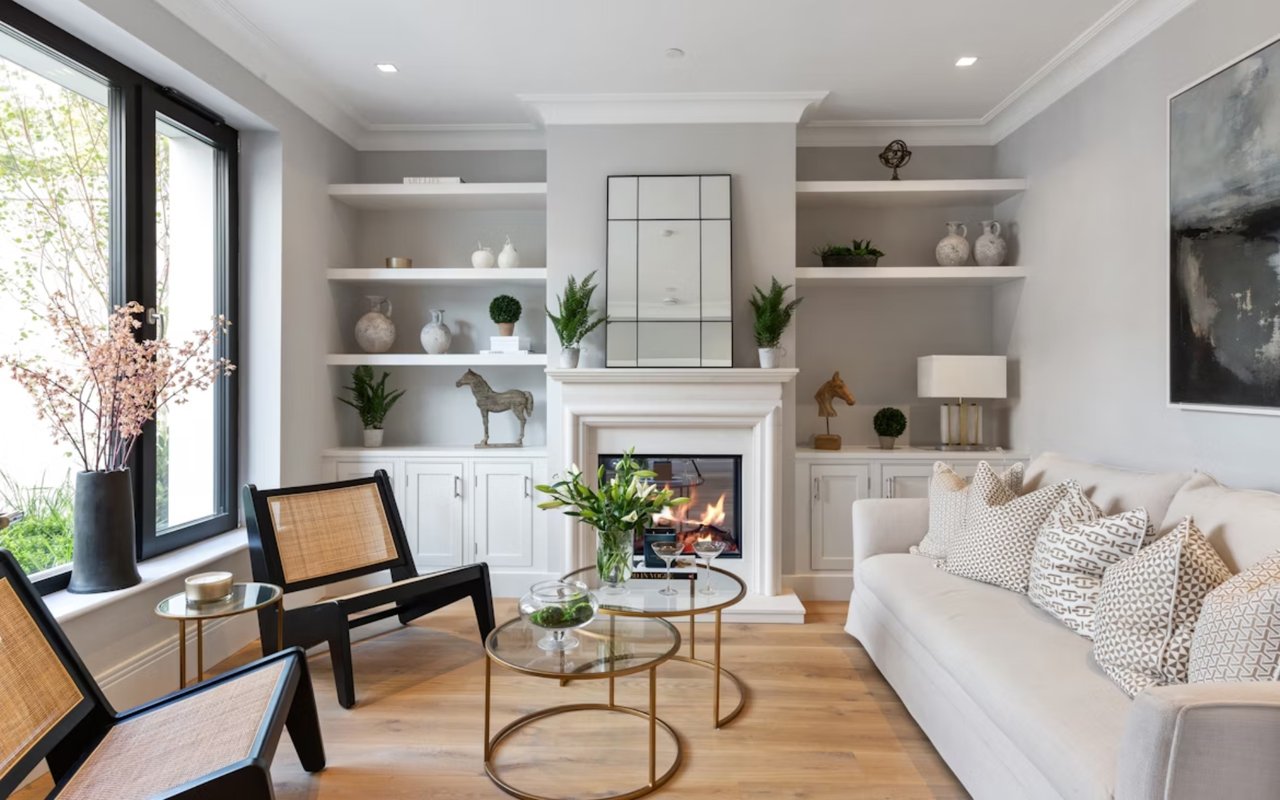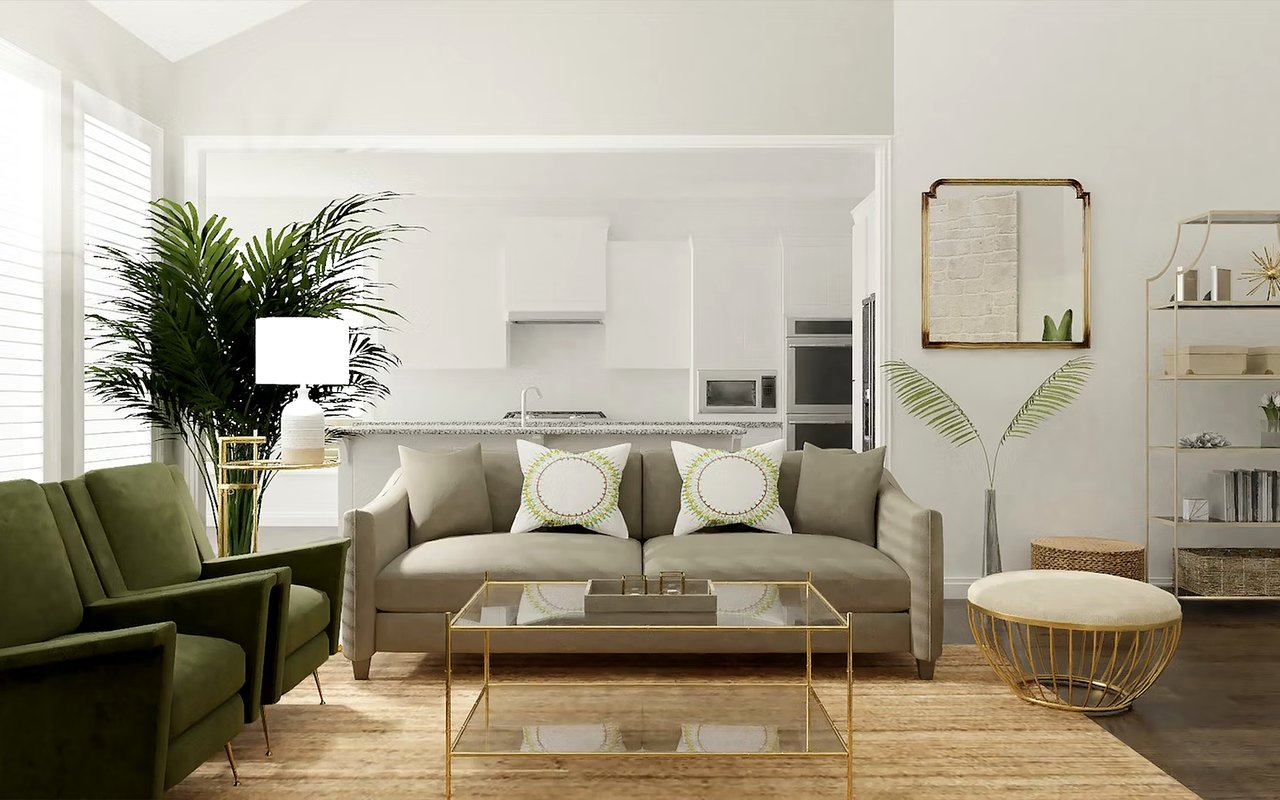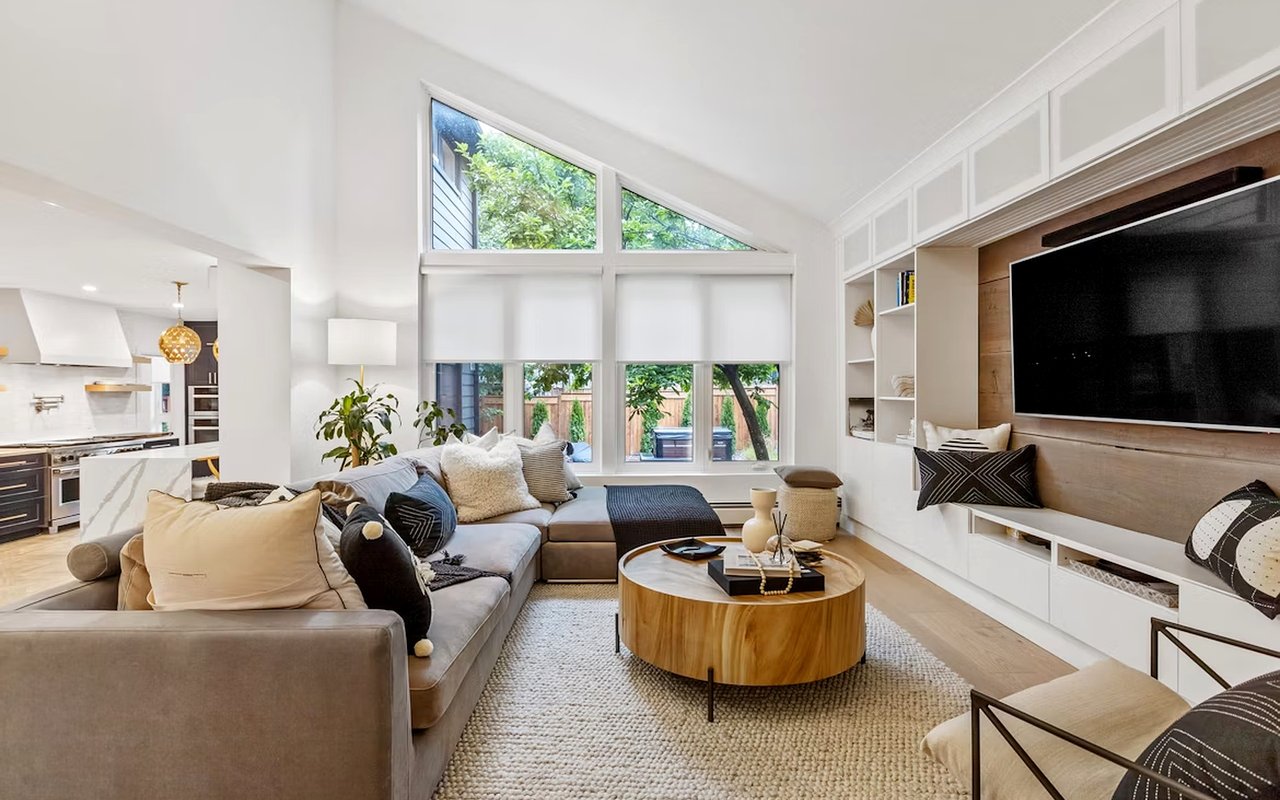The phrase “modern classic” might seem contradictory at first glance. But in the world of interior design, it defines a sophisticated harmony between the old and the new. This design approach honors the architectural elegance of traditional interiors while embracing the clean, uncluttered essence of contemporary living. The result is a space that feels both refined and current without being overly minimal or overly ornate.
Rather than picking a side in the ongoing tug-of-war between contemporary coolness and classic charm, modern classic style brings both to the table. That’s what makes it such a lasting choice. It provides homeowners with rooms that feel curated while allowing space for personal style and comfortable living.
Where It All Begins: The Foundation of Modern Classic
The first step in achieving this look starts with the bones of the space. Think coffered ceilings, crown moldings, large windows, and other architectural details that suggest a sense of structure. These features are typically found in classic architecture, but they act as a powerful base for layering in sleek, contemporary touches. If you’re working in a more modern build, those structural details can be added subtly—like thin trim work or paneled walls—to hint at tradition without going full historical.
The walls are often finished in neutral colors, ranging from soft whites and creams to pale grays or muted taupes. These choices create a canvas that allows both traditional and modern furnishings to shine without one overpowering the other.
Materials That Tell Two Stories
A defining feature of modern classic interiors is their mix of materials. Marble, brass, and natural wood introduce a sense of luxury and tradition, while glass, matte black metals, and minimalist upholstery balance the overall feel. For example, a contemporary sofa upholstered in a muted velvet might sit next to an antique wooden coffee table or under a gleaming brass chandelier. This contrast is intentional and necessary—it’s what keeps the space feeling fresh, not staged.
Fabrics are often plush but understated. Instead of overwhelming patterns or bright colors, modern classic interiors opt for solids or gentle textures like linen, mohair, or brushed cotton. In essence, the material palette aims to be tactile without being loud.
Furniture That Bridges the Gap
The furniture in a modern classic space walks a fine line. On one hand, it borrows clean lines and geometric shapes from contemporary design. On the other, it introduces curves and detailing reminiscent of traditional pieces. You’ll often find rolled-arm chairs with updated silhouettes, or pedestal dining tables paired with minimalist chairs. This creates a dynamic but cohesive furniture mix that doesn’t feel too anchored in any one era.
Placement is also intentional. There’s no crowding of rooms or unnecessary clutter. Instead, furnishings are carefully chosen to serve a purpose, which enhances the feeling of balance that modern classic interiors strive for.
Light Fixtures and Art: Where Personality Comes Through
Lighting plays a pivotal role in setting the tone. While recessed lighting may be used for overall brightness, statement fixtures are where the design story deepens. You might see a vintage-inspired pendant light hanging above a sleek quartz island or modern sconces flanking a traditional fireplace surround. These elements serve as the perfect opportunities to express individual style while adhering to the larger aesthetic of the room.
Artwork follows a similar philosophy. Classic black-and-white photography or traditional oil paintings can hang alongside abstract contemporary works, all within the same space. The key is in the framing and placement. Unified framing styles or carefully considered positioning help these elements feel deliberate rather than eclectic.
Color Choices: Neutrals with Purpose
One of the more recognizable traits of modern classic style is its commitment to a soft, neutral palette. While the base tones typically lean toward ivory, charcoal, sand, or even deep navy, accent colors are used sparingly. When they do appear, they are often introduced through accessories, artwork, or an upholstered piece of furniture.
This careful use of color maintains a calming, cohesive atmosphere. The palette is never sterile or flat, though. Variations in texture and light help the neutral shades feel dynamic and layered.
Accessories and Details: Edited Elegance
In keeping with the philosophy of “less, but better,” accessories are carefully selected and placed. There are no excessive trinkets or purely decorative fillers. Instead, a few standout items—like a hand-thrown ceramic vase, a stack of beautiful books, or a sculptural bowl—bring warmth and character.
Mirrors are another important accessory in this style. Often framed in antique brass or blackened metal, they serve both functional and aesthetic purposes. They reflect light, open up smaller spaces, and add a subtle touch of glamour without overwhelming the room.
Window treatments also fall into the refined category. Think full-length curtains in natural linen or simple Roman shades in soft, tonal fabrics. These finishing touches lend softness and privacy while remaining visually quiet.
How Modern Classic Style Works in Real Homes
One of the strengths of this approach is its adaptability. Whether you’re working with a historic Piedmont estate or a newly constructed home, modern classic interiors can feel equally at home. For traditional residences, the goal may be to simplify and update without erasing the home’s original character. In newer builds, it often means adding details that lend timelessness to otherwise blank slates.
This style works especially well for homeowners who appreciate a sense of order and calm. It’s ideal for people who enjoy thoughtful and understated design but who also want their home to feel lived in and welcoming.
More than anything, modern classic interiors prioritize function alongside form. These are not showrooms. They are homes with furniture that invites you to sit, lighting that flatters every angle, and rooms that feel curated but never cold.
Why Modern Classic Style Endures
Trends come and go quickly in the design world, but certain principles remain attractive across decades. The blend of traditional elegance and contemporary clarity creates rooms that look as good today as they will ten years from now. It’s not about chasing the latest look. It’s about creating a backdrop for life that feels consistent, balanced, and beautifully lived-in.
Modern classic style has staying power because it makes room for evolution. A vintage rug can be swapped for something more graphic, or a clean-lined sofa can be reupholstered in a more traditional fabric. These updates can happen without having to overhaul an entire space, which makes this design approach both timeless and practical.
Navigate Piedmont Real Estate
Piedmont homes have their own unique charm, whether it’s original architecture or newer spaces filled with possibility. For those considering buying or selling in this distinct part of the Bay Area, working with a real estate professional who understands the history and modern expectations of the local market is essential.
Pamela Strike Fullerton offers exactly that balance. Her thoughtful approach to real estate mirrors the same principles that make modern classic interiors so appealing—clarity, purpose, and timeless sensibility. Whether you’re envisioning a home with stately moldings and open, modern spaces, or one ready for a thoughtful transformation, Pamela can guide you through the home-buying process with insight and ease.
Let her help you find a property in Piedmont that’s not only a good fit for your lifestyle, but a home with lasting potential. When you're ready to take the next step in Piedmont’s real estate market, Pamela Strike Fullerton will be ready to help you do it with confidence.
*Header image courtesy of Unsplash




